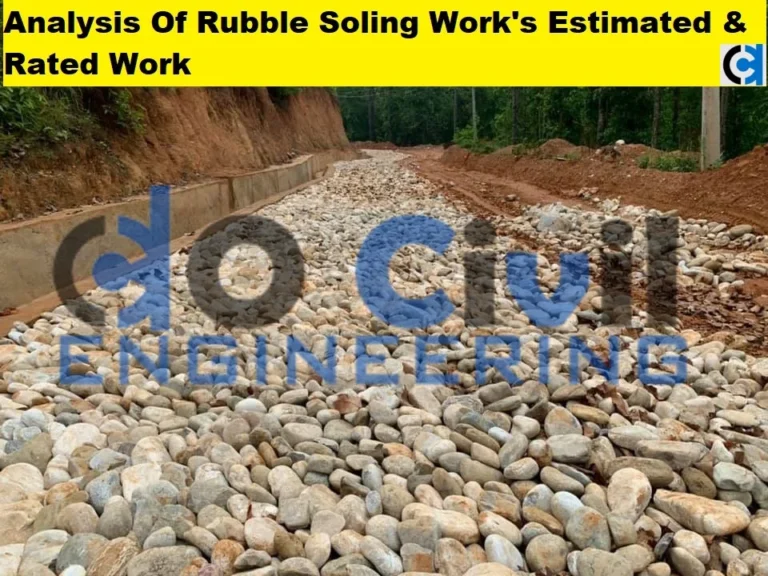Analysis Of Rubble Soling Work’s Estimated & Rated Work
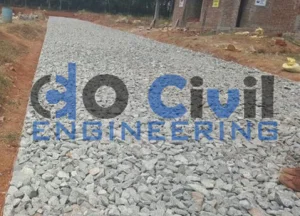
Rubble soling works to provide soling of stone over the ground. Soling over the ground is done to compact the ground with a hard layer so that the structure over it does not consolidate and spoil the structure’s design.
Here we will discuss the Estimation & rate analysis of rubble (Stone) soling work step by step. The rate of soling may vary from place to place according to labour charge and materials price. I have discussed taking some standard values to calculate estimation and rate analysis here.
Soling is the spreading or laying of stone over the ground trenched beneath a structure, such as a footing, a compound wall, a drainage system, a canal, etc. Bricks, rock, and other materials can be used to make soling.
The soling of stone over the ground is accomplished by using rumble. Soling over the ground compacts the ground with a complex layer to prevent consolidation and design degradation of the structure above.
The estimation and rate analysis of the stone (rubble) soling work will be covered in detail here. The cost of soling may vary from location to location depending on labour costs and material costs. I’ve discussed using a few standard values to compute estimation and rate analysis here.
Estimation & Analysis Rate Rubble Work
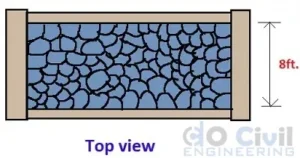
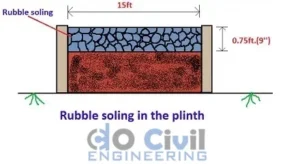
Let’s now determine the cost of the above drawing’s step-by-step rubble cleaning.
The Provided Data :
The rubble soling is 15 feet long.
The rubble soling is 8 feet wide.
The rubble soling is 0.75 feet thick.
The Total Amount Of Debris Scattered.
(Length, Width, and Thickness)
= [15 feet by 8 feet by 0.75 feet]
= 90 cu ft.
We will determine the amount of labour and material needed for the stone soling.
1- Calculation Of The Material:
a) Stone Volume Needed For The Required Amount Of Rubble
= [1.25 x the volume of soling rubble]
= [1.25 x 90 cu ft.]
= 112.50 cu ft.
b). Moorum Volume:
Moorum is a fragmented form of rock that fills the plinth gap in construction lines, roads, footings, drains, etc. Although it is red, it contains a lot of aluminium.
The necessary amount of moor.
= 15% of the volume of stone rubble.
= (15 x 112.5)/100
= 16.875 cu ft.
2) Calculation Of The Labour Cast:
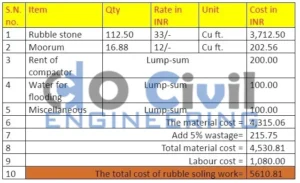
Depending on the region, the labour cost per cubic foot of the rubble soling work ranges from INR 9 to 15 per cu ft.
Let’s use a typical rate of INR 12 per cubic foot.
The total labor cost for removing debris
= Total volume of soling in cubic feet times labour rate per cubic foot.
= 90 cu ft. x 12
= INR 1,080/
Let’s now create a table showing the total cost of clearing rubble.

1a)-The Price Of Rubble Soling Per Cubic Foot:
= Total cost of solving rubble divided by total soling volume in cubic feet
= (5,610.81/90)
= 62.34 INR per cubic foot.
2b)-The Price Per Cubic Meter For Soling Rubble:
= [62.34 x 35.3147]
= 2,201.60 INR per cup.
1cum equals 35.3147 cubic feet.
Remember to include 10% to 15% of the contractor’s profit when creating the project’s bill of quantities.
So, using this method, we can estimate and analyze the cost of the rubble soling work..
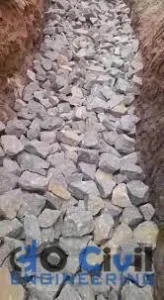
Does The Soling’s Depth Factor Into The Excavation’s Depth.
To Learn About The Planning, Procedure, And Checklist For excavation, read the Entire Blog
You will learn about the Excavation Checklist for site-specific work in this blog.
Do you realize the drawing’s “Depth of the Excavation” also includes “Depth of the Soling”?
So, before starting the excavation, everyone is invited to read this blog, which serves as a crucial checklist. Let’s get going.
Soling depth is dependent on footing depth, which is dependent on a variety of factors, including
- The Soil’s Nature.
- Type of soil and water table position.
- Engineers, let’s first acknowledge
Defining Soling
The soling process entails excavating the ground to the required depth, laying crushed stone (also known as brick ballast or stone ballast) quarries next to one another, and filling any gaps with sand.
It is included in the foundation because it serves as the footing’s cushions and has substantial sub-base works.
Whatever the soling’s thickness, it depends on the subsoil base.
The Primary Goal Of Soling’s Work
- First, consolidate the base soil layer.
- One of the most popular methods for stabilizing soil is this one.
- It aids in improving the soil’s ability to support more weight.
- Withstand the building’s collapse.
- It provides a strong and stable foundation for the floor.
- To give the foundation more strength.
Procedure:
- Wedging and packing are done before the ground floor slab is laid.
- We offer both stone ballast and brick ballast as soling options.
- Then, use the sand to close up the gaps.
- Consolidating with the heavy rollers or ramming is done after laying for the entire area.
Site Inspection: Soling Check
- Checking the drawing (good for construction drawing),
- I have on hand is what we must do when we visit the site.
- Does the depth of the excavation take into account the depth of the soiling?
Check before the excavation as well.
The PCC and cushion depth mentioned earlier determines whether the footing is deep enough.


